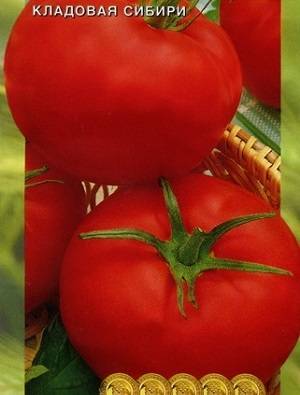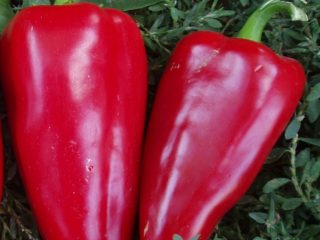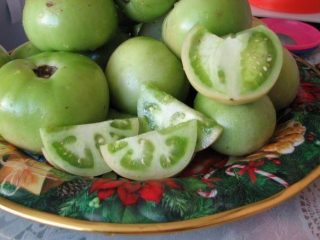Content
Summer is still far away, but the garden harvest begins much earlier. Work is already underway to select seeds of various vegetable crops. Every gardener tries to select varieties so that everything is consistent: taste, size, versatility of use, disease resistance and much more.
One of the varieties, the Metelitsa tomato, was created at the Siberian Research Institute of Plant Growing and Breeding of the Russian Agricultural Academy in the first years of the 21st century. The plant has already managed to find its admirers. And there is nothing to be surprised about here, since its characteristics meet almost all the requirements of gardeners.
Description
Tomato Metelitsa F1 is a hybrid. Fortunately, it does not have a namesake, so you can safely purchase seeds that will match the description and characteristics. The variety is included in the State Register of the Russian Federation and is recommended for outdoor cultivation. Although it produces a good harvest in greenhouses.
Bushes
Tomatoes from Siberian breeders from the group of medium-early ripening vegetables. The first ripe fruits can be harvested 105-108 days after sowing the seeds for seedlings.
The hybrid is short, about 50-60 cm high, and is compact. The bushes are not standard.The juicy green leaves are small, but it is still best to remove them as the fruits form. The first flower tassel appears above the 6-8 leaves, all subsequent ones - after 1-2. The inflorescences are simple, each of them produces 5-6 fruits.
Fruit
The Metelitsa variety is a tomato with flat-round fruits that have ribbing, but it is weakly expressed and noticeable only upon close examination. The resulting ovaries are light green, becoming scarlet-red when biologically ripe.
Medium-sized tomatoes, usually from 60 to 100 cm, are just what you need for canning whole fruits. But there are specimens on the lower tassels weighing up to 200 grams. Fruits with a glossy, dense, but not hard skin, do not crack during ripening, and retain their integrity when canned. This quality is confirmed by the photo below.
Each fruit has four seed chambers. The pulp of Metelitsa F1 tomatoes is fleshy, pale red in color, sweet with a slight sourness, because the sugar content is from 1.9 to 2.9%. The dry matter in the fruit is 4.2-4.6%. There is a dense shell around the pulp, which allows it to maintain its presentation.
Culinary purpose
Metelitsa tomatoes, according to the description of the variety and reviews from gardeners, have a universal purpose. Summer salads are made from the fruits. Tomatoes are used for preparing various preparations for the winter, where pieces of the fruit are used. In addition, tomatoes can be salted, pickled, dried and even cooked into tomato jam.
Tomatoes Metelitsa, gardener's opinion:
Characteristics
Since gardeners need to understand the characteristics of the variety, in addition to the description, they will also need characteristics of the Metelitsa tomato
First, let's talk about the advantages of the hybrid:
- Harvest.From one square meter they harvest from 17 to 20 kg of delicious ripe fruits. The productivity of the Metelitsa tomato is confirmed by reviews and photos.
- Unpretentiousness. Growing this variety of tomatoes is not difficult. In addition, thanks to their high immunity, plants thrive even in risky farming areas.
- Features of fruiting. When comfortable conditions are created and agricultural practices are followed, the fruits are harvested until the cold weather.
- Versatility of purpose. The description stated that the fruits can be consumed fresh and processed.
- Marketable condition. The fruits ripen well and are transported without loss. Product yield of fruits is not less than 97%. That is why large agricultural producers pay attention to this variety of tomatoes. The Metelitsa tomato is stored almost until the New Year, and the taste and beneficial qualities are not only not lost, but, on the contrary, increase, as our readers write about in the reviews.
- Attitude to diseases. The variety is resistant to the most common tomato diseases and has high immunity.
Nothing is known yet about the shortcomings, despite the fact that Metelitsa has been grown for more than 15 years. This is precisely what attracts gardeners.
Features of growing seedlings
Tomatoes of any variety love to bathe in the sun, so choose a place for them that is well-lit and not shaded. Planting plants along fences and walls of the house is not recommended.
Since early and mid-ripening tomatoes are grown to obtain vitamin products in the first half of summer, you will have to get healthy seedlings. Metelitsa tomato seedlings are planted in the ground at the age of 50-60 days. Therefore, seeds are sown at the end of March, beginning of April.
Soil preparation
The soil is prepared as usual: mix turf soil with humus or compost, add a little sand and wood ash. Today you can use store-bought formulations designed for growing seedlings. The big advantage of such soil is that all nutrients are balanced in it.
A week or two before sowing Metelitsa tomatoes, the soil must be spilled with boiling water with the addition of potassium permanganate or a solution of boric acid. This helps get rid of spores of various diseases and pests overwintering in the soil. But the most important thing is that such heat treatment kills the black leg. During this time, bacteria will begin to work in the soil, which has a beneficial effect on the growth of seedlings.
Seed treatment
First, the seed material is inspected and all puny seeds are removed. Then they are dipped in a saline solution (1 full tablespoon of salt per liter of water). Specimens unsuitable for sowing will float, the rest will sink to the bottom. These are the ones that need to be processed.
Tomato seeds are washed in clean water to remove salt, placed in a gauze bag and dipped in a dark pink solution of potassium permanganate for 15 minutes. After this, rinse with water and dry. You can harden the seeds of the Metelitsa variety in the refrigerator by placing them in a bag for a day on the bottom shelf where vegetables and fruits are stored.
Sowing
Seeds can be sown in a common container or in separate cassettes or cups. When using the latter option, tomatoes will not require picking.
The seed is placed in grooves or dimples to a depth of no more than 1 cm. The containers are placed in a lighted place at a temperature of 22 degrees.The first hooks appear after 5-6 days, sometimes earlier. Small tomatoes need good lighting and timely watering.
Picking
When the seedlings have 2 or 3 leaves, the seedlings planted in a common container are planted in separate cups. Caring for seedlings is not difficult. You can feed them with an ash solution, or water them with a pink solution of potassium permanganate.
Before planting in open ground or a greenhouse, Metelitsa tomato seedlings are hardened off and accustomed to new growing conditions.
Agricultural technology for growing in soil
Plants are planted in open ground after round-the-clock above-zero temperatures have established in early June. Planting in greenhouses takes place earlier. No more than six plants are planted per square meter.
Caring for the Metelitsa hybrid is not difficult; almost all operations are the same as when growing other varieties of tomatoes:
- watering, weeding;
- loosening and hilling;
- feeding and disease prevention.
Although tomatoes have their own characteristics. Plants require pinching and removal of leaves before the first flower cluster.
In wet weather, to prevent diseases, plantings are treated with fungicides, antifungal and antiviral drugs.
When watering tomatoes of the Metelitsa variety, you need to make sure that moisture does not get on the leaves. The amount of moisture is reduced during fruit ripening to prevent cracking.
Harvesting tomatoes
Fruiting, and, consequently, the ripening period of tomatoes is long, almost a month and a half. Harvesting is carried out gradually, as the fruits ripen.Since this variety of tomatoes is easily transported, this creates additional convenience for gardeners growing vegetables for sale.
Based on the description and characteristics, the fruits can be harvested in milky ripeness, as they ripen without losing their beneficial qualities. For harvesting, you need to choose dry and sunny weather, in this case you can avoid the occurrence of diseases.
The refrigerator is not used for long-term storage of fruits. It is best to put Metelitsa tomatoes in a box and put them in a room at room temperature.
As you can see, any beginning gardener can grow the Metelitsa variety if desired. We are simply sure that once you plant these tomatoes, you will never give them up.
















